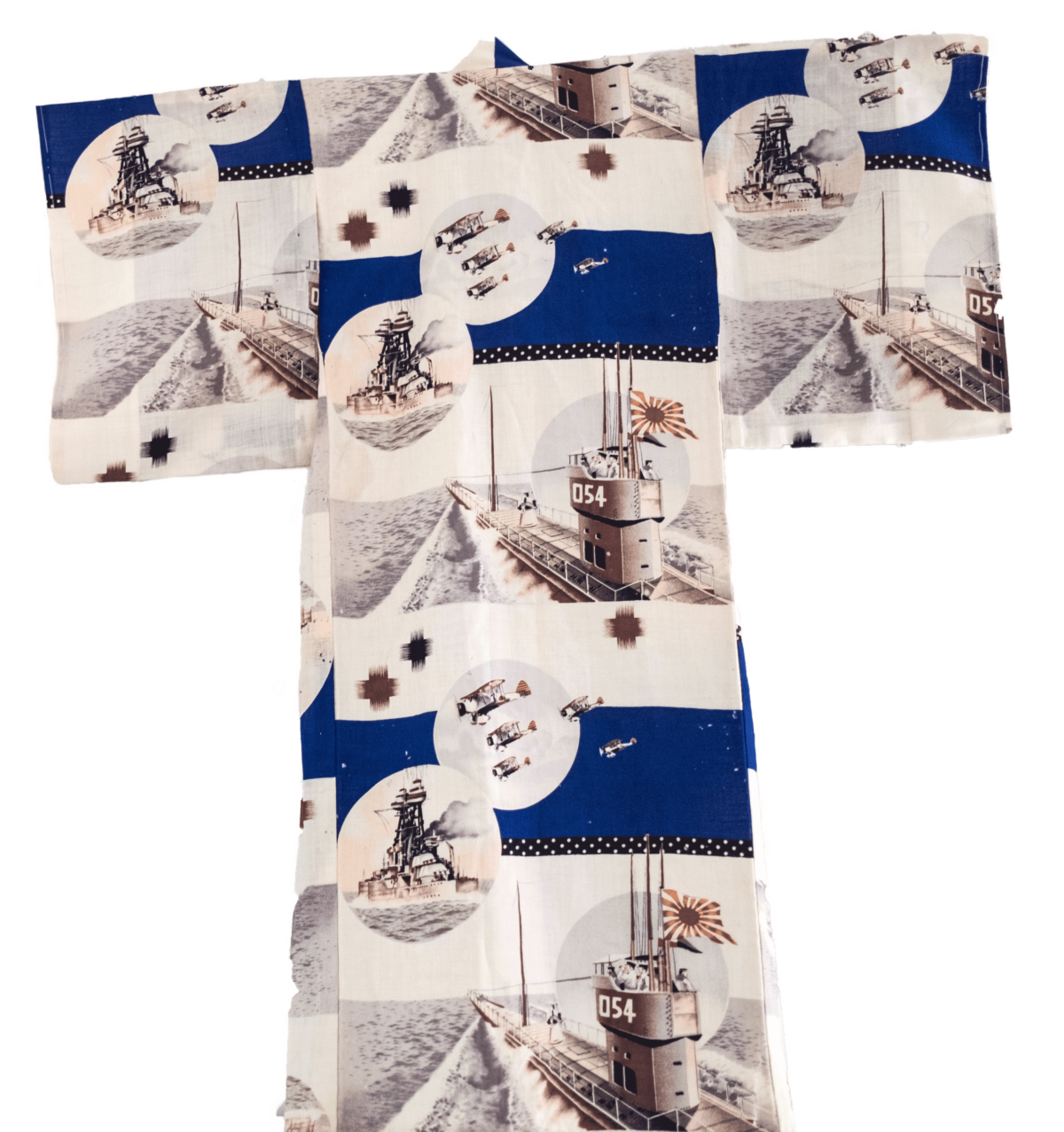Baby Kimono

Baby cotton kimono: submarine, battleship and airplanes, 1930ies, private collection
The cut of the kimono allows little variation. All the more important are the material, patterns and colors. From the late 19th century, and increasingly in the 1920s, new types of “bizarre” patterns appeared on the market. They were aimed at young women in the cities, demonstrating their affiliation with modern life (called moga in Japanese, a derivative of “modern girl”). Japan’s national mobilization also created a need for martial symbols. In private, men wore kimonos whose patterns depicted warships or victorious Japanese troops. Boys’ kimonos were also printed with such heroic motifs.